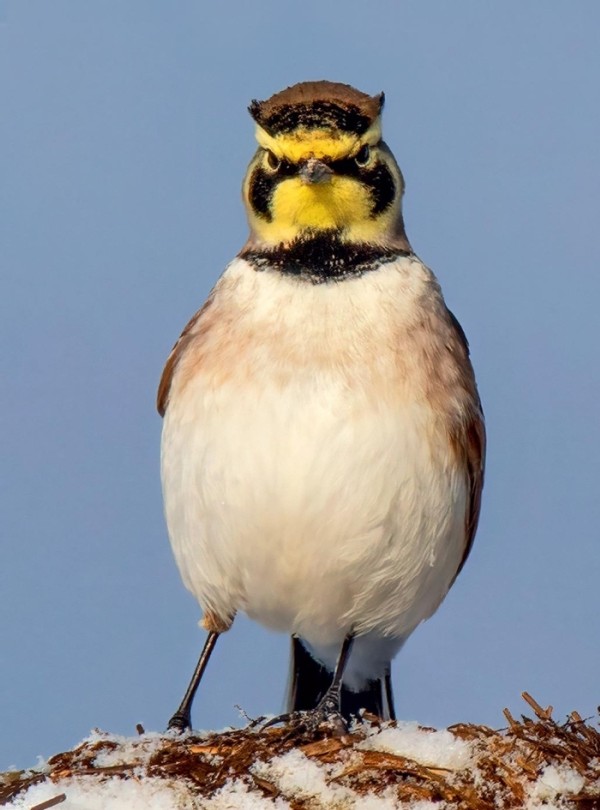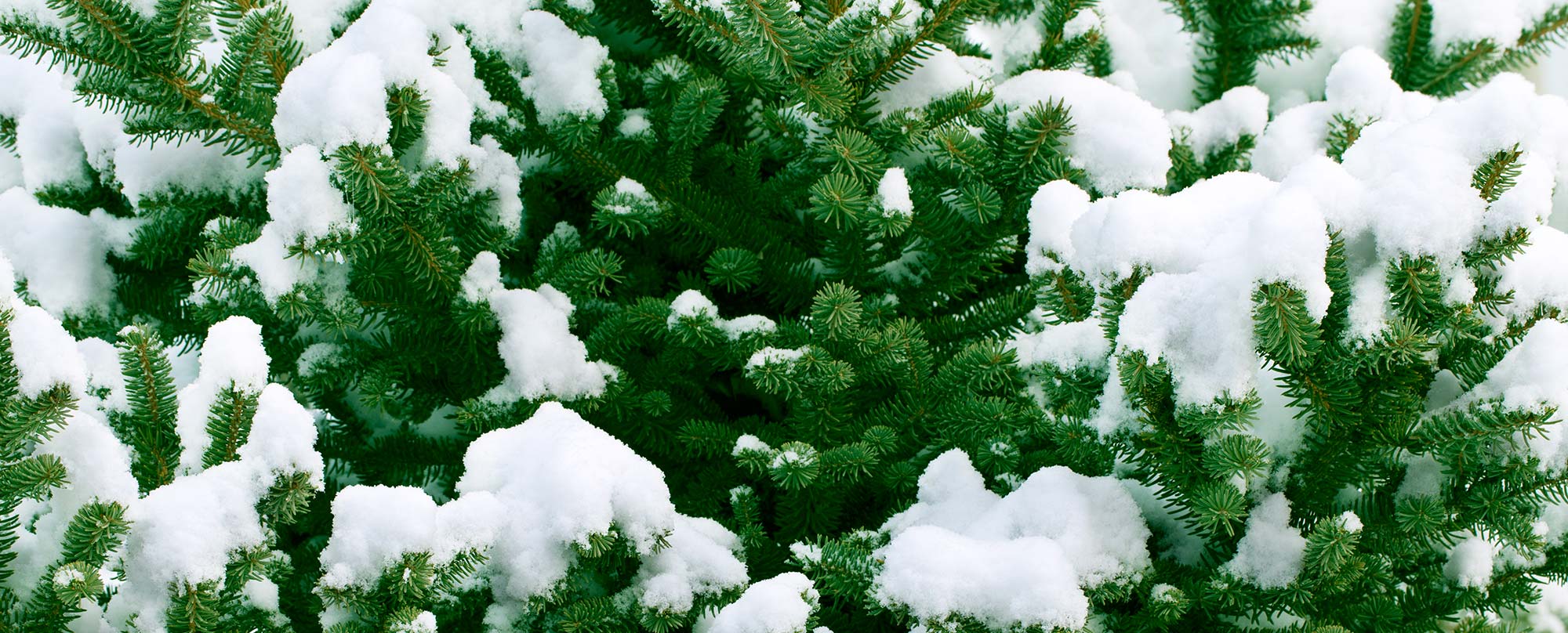
Photo by Mary Holland
.The horned lark (Eremophila alpestris), so named for its tiny feather tufts resembling miniature devil horns, is the only true lark species native to North America. These birds nest on prairies, deserts, and agricultural land throughout much of the United States, as well as on the Arctic tundra, and during winter they appear in high numbers in the Northeast, often in large flocks that may also include Lapland longspurs and snow buntings. Horned larks often forage for seeds of ragweed, foxtail, crabgrass, and other weedy plants in fields where the wind has blown the ground bare, and they also may seek food on manure and silage piles. As they walk or run along the ground, these brown-backed birds are very well camouflaged (not so much on snow). There is a wide variation of shades of brown back feathers throughout their range, and researchers have found that the birds’ color is strongly correlated with the color of the local soil.

